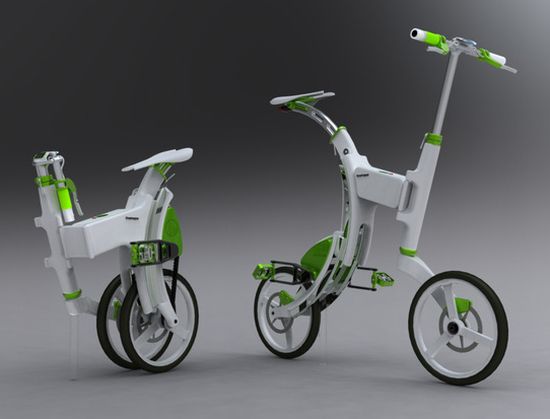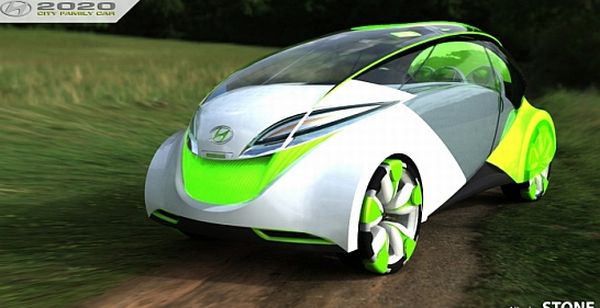
Transportation cost is the biggest problem the world is facing today, so carmakers are looking out for alternate source of energy to drive our vehicles. Hydrogen is one of the sources, which is quite cost effective and eco-friendly. Some of the recent hydrogen fueled vehicles are:
Peugeot Hydrogen electric Cars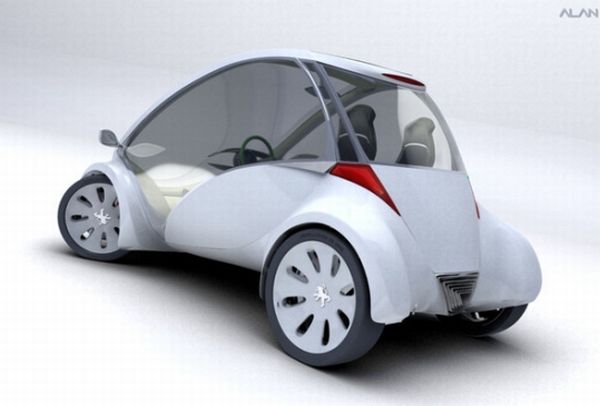
Industrial designer Alan Kravchenko has designed a hydrogen electric concept car for Peugeot. An electric motor and onboard hydrogen and oxygen fuel tanks provide the much-needed succor to the car. The strategically positioned onboard fuel help improve the efficiency of the wheel-mounted electric motors. Tunnel cooling radiators are integrated in the car’s hood to cater the engine’s overheating issue.
Cadillac Provoq
The Cadillac Provoq produces no harmful emissions and is termed as a “zero emission vehicle”. It is powered by a fuel cell: a battery that uses hydrogen from oxygen in water sales. The car is driven by its electrical energy. The only waste product of the car is clean water. The Provoq has the fifth generation of General Motor’s E-Flex fuel cell. The Provoq can drive up to 483 kilometer on a full tank of hydrogen, consisting of hydrogen up to 450 kilometer and 32 kilometer on the remaining electrical energy.
Hydro Kultur Nios lightweight car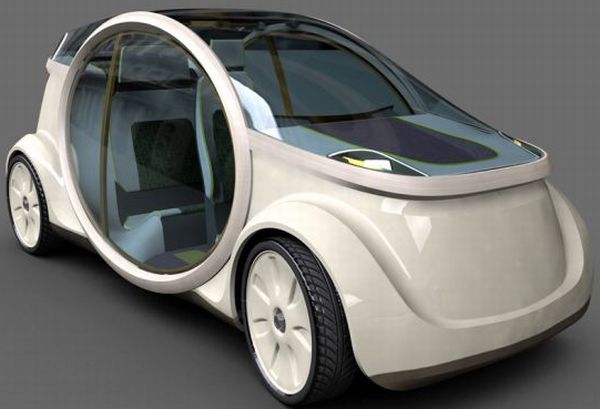
The Nios concept is a working prototype developed of a hydrogen-fueled city car. A team of students and professors at three German Universities and colleges: The University of Art and Design in Halle, the Technical University Chemnitz, and the College of Further Education in Merseburg developed it. The vehicle took part in the 2010 Shell Eco Marathon in the “Urban Concept Cars” category and won the Autodesk Design Award for its outstanding design and ergonomics.
The DC electric motor of the vehicle is powered by an advanced hydrogen fuel cell system developed at the Technical University of Chemnitz. With this setup the Nios can travel around 500 Km (310 miles) on a single liter (0.26 gallons) of fuel!
Volvo developing a hybrid hydrogen-electric vehicle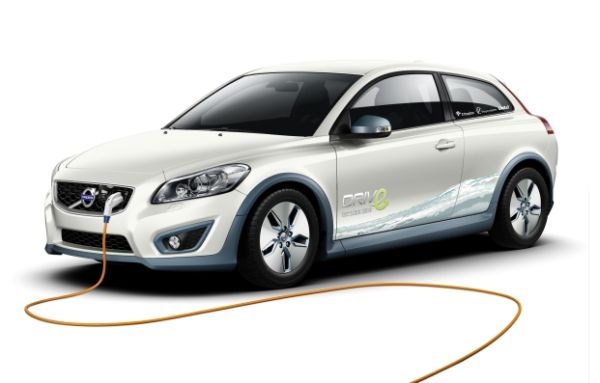
Volvo’s electric C30 concept has a 94-mile range, but the carmaker is planning to add a fuel cell and an on-board reformer to produce hydrogen from gasoline, extending the vehicle’s range by 155 miles. Instead of depending on the promised hydrogen highway to be built, Volvo is exploring the use of an on-board reformer to process gasoline into hydrogen gas. The fuel cell will use the hydrogen gas to power with a conversion ratio of 85%, the electric motor when the C30’s 24kwh battery has been depleted, more than doubling the vehicle’s range without increasing battery size. By powering an electric motor with hydrogen has twice the efficiency of gasoline powering an internal combustion engine.
Hyundai 2020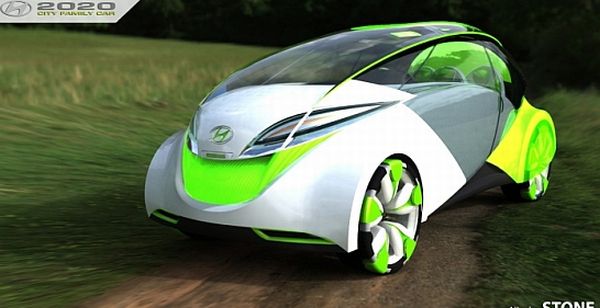
The Hyundai 2020 family city car designed by Nicolas Stone is based on MIT’s compact car with a plug-in hybrid. The exterior will have solar panels to collect energy for generating electricity. Similar to the plants, the car is powered by a photosynthesis artificial system. As the designer explains it, ‘the vehicle uses electricity to stimulate a central water tank, splitting the water into hydrogen and oxygen. The hydrogen gets stored in special reserve tanks, while the oxygen gets expelled into the air as exhaust.’
Ozone Hydrogen powered concept car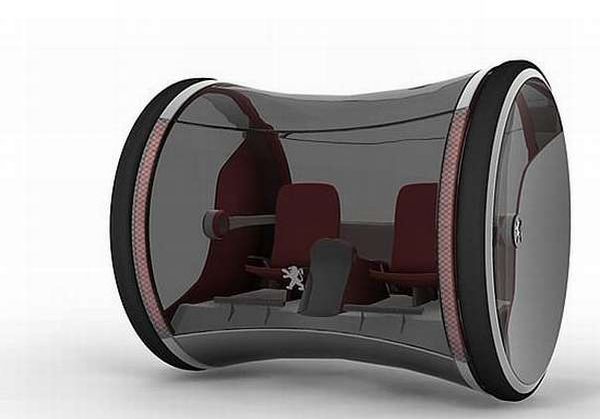
The new concept vehicle called Ozone seems to revolutionize the way we commute. The vehicle works on hydrogen powered fuel cells and looks futuristic in every way possible. In addition, the thought and the concept seems to be fine, however the structure might make you feel uncomfortable in your seats. The body is encased between two giant wheels controlled by separate motors which are powered by fuel cells, though this two-seater looks more like a design picked straight out of fantasy due to its semi transparent glass casing and controlled by joystick.
Squalus EV powers itself with multiple renewable energy sources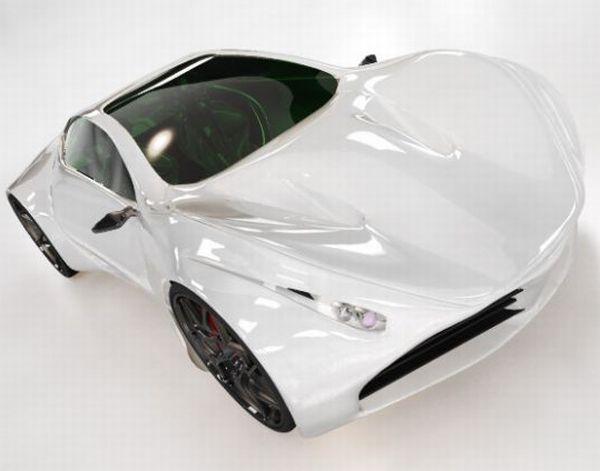
This concept is named Squalus, and it a zero-emission concept car designed by the Mexican designer Arturo Arino. The vehicle represents a combination of luxury and green features. Arino’s car includes four in-wheel electric motors. The all-electric vehicle features four electric in-wheel motors providing the necessary propulsion. The Squalus generates power from the spinning motion of the wheels. If the electric engines stop working, the car turns on a hydrogen engine. This green car also features a big windshield equipped with see-through solar cells that generate power on the move.
The Hydrogen-Powered FC by Honda
Honda launched the Honda FC Sport design study model, a hydrogen-powered, three-seat sports car concept, at the 2008 Los Angeles Auto Show. The FC Sport emphasizes the design flexibility and potential of Honda’s V Flow fuel cell technology – already deployed in the Honda FCX Clarity sedan – and reconfigures it into a lightweight sports car design with an ultra-low center of gravity, powerful electric motor performance and zero-emissions.
The FC Sport is configured to accommodate a custom-formed high-power fuel cell stack, located between the rear seats, and a battery pack placed low in the middle of the vehicle. The hydrogen storage tanks, visible from the rear deck, showcase the FC Sports fuel cell technology in much the same way that a “naked bike” motorcycle showcases its engineering technology.
VW Pholeum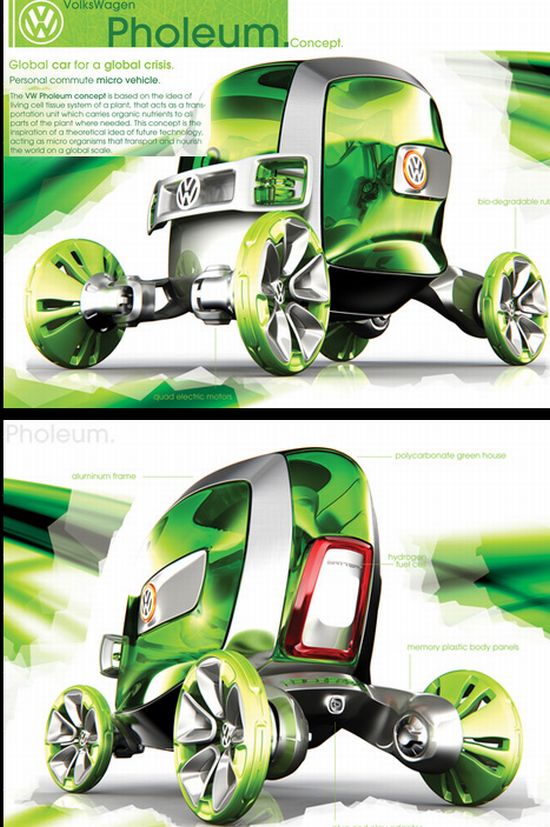
The VW Pholeum hydrogen fuel concept vehicle from Canadian industrial designer Alexei Mikhailov provides a personal transport vehicle for an urban environment. With a clear body shell, modeled after a greenhouse, the minimalist one-person interior has a control steering pod and pedal controls for acceleration and braking, similar to gaming controls. The external wheelbase allows the VW Pholeum to pivot in a 360-degree range, which facilitates easier parking and maneuvering.
Dacia SHIFT
The superb Dacia SHIFT concept car is inspired by the Dacia Duster concept and was specially designed keeping the needs of the young Bucharest residents in mind. This two seater car comprises excellent cutting edge design with a transparent removable roof which will allow the passenger freedom of an open sky even though the roof is closed. The power source of this can either be a lithium-ion battery or electric piles that run by liquid hydrogen. The branding of this car have been furnished in a quite simple and excellent way, Dacia have been placed between the headlights and SHIFT in a larger format underneath.




